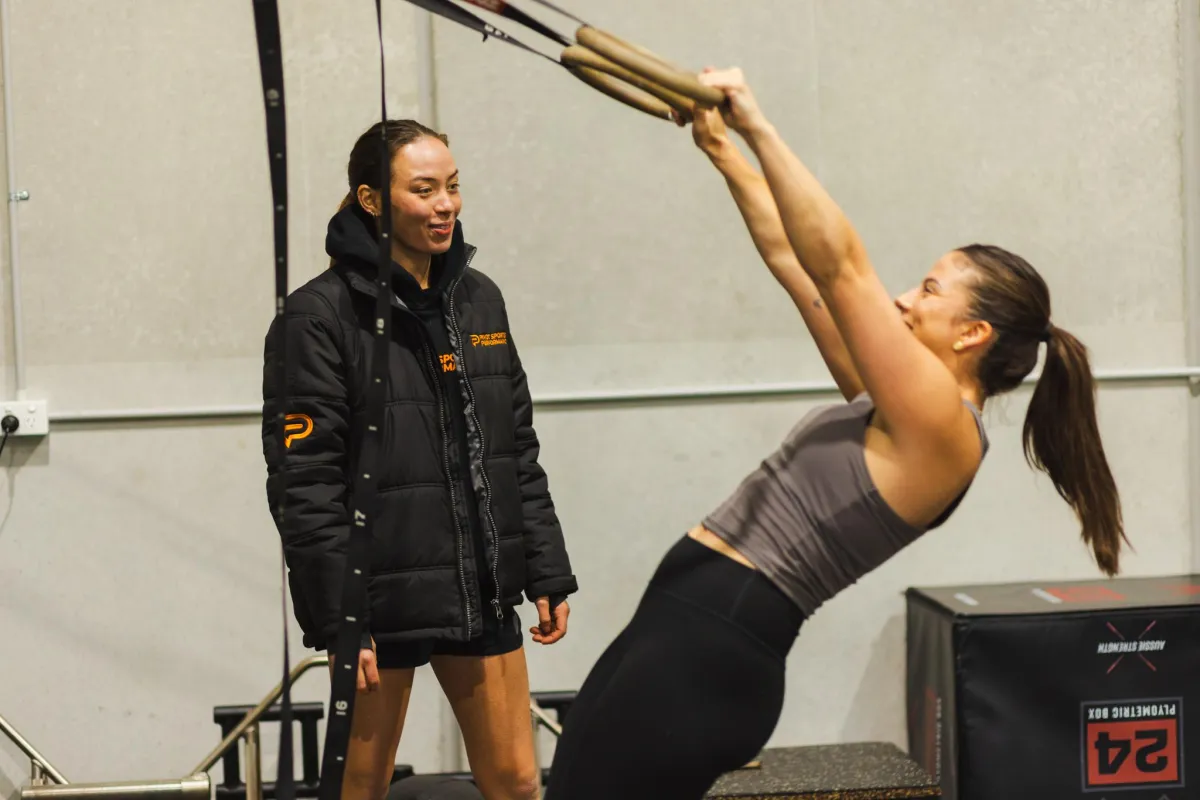Welcome To
Our Blog

Shoulder Surgery vs Rehab for Dislocations | Field Athletes' Guide
Surgical vs Non-Surgical Shoulder Dislocation Treatment in Field Sport Athletes
Introduction: When a field sport athlete suffers a shoulder dislocation, one of the biggest questions that arises is whether to treat it conservatively (rehab only) or opt for shoulder instability surgery. Shoulder dislocations have a notorious tendency to recur, especially in young athletes involved in contact or high-impact sports. This has led to ongoing debates about shoulder dislocation treatment options: Should an athlete undergo surgery after a dislocation, or can non-surgical shoulder rehab suffice? In this post, we compare surgical vs non-surgical management of shoulder dislocations in field sport athletes. We’ll discuss when shoulder surgery for athletes is indicated (such as recurrent dislocations or high-risk sports), outline common procedures like an anterior labral stabilisation (Bankart repair) or Latarjet, and look at outcomes and return-to-play results for each approach. Understanding these options will help athletes and coaches make informed decisions about shoulder instability surgery versus rehabilitation.
Non-Surgical Management (Conservative Rehab)
Many first-time shoulder dislocations in athletes are treated non-surgically, at least initially. Conservative management involves reducing the dislocation (putting the joint back in place), a short period of immobilisation, and then rehabilitation. For example, a first-time dislocator’s shoulder is typically put in a sling for 1–3 weeks for comfort, followed by guided physiotherapy. During rehab, the athlete works on restoring range of motion, strengthening the rotator cuff and shoulder muscles, and improving stability (as detailed in the previous post).
Advantages: The biggest advantage of non-surgical management is a faster initial return to sport. Field sport athletes often return to play in as little as 4–6 weeks after a first-time shoulder dislocation without surgery. Once pain is controlled and the athlete has near-normal motion and strength, they can often resume practices with a brace or tape for support. Avoiding surgery also means avoiding surgical risks (infection, stiffness, etc.) and a long recovery. This approach may be suitable for an athlete late in their season or an older athlete with lower recurrence risk.
Drawbacks: The main downside is the risk of recurrence. Without surgically repairing the torn stabilising tissues (like the labrum), the shoulder may remain looser. Studies show that the recurrence rate after a conservative treatment can be quite high in young, active populations – exceeding 50-70% in some cases. One study found that among patients under 20 years old, as many as 68% had the shoulder dislocate again after an initial dislocation treated non-operatively. In contrast, patients over 30 had a much lower recurrence around 12%. For field sport athletes (often in their teens or 20s and engaged in contact play), this means a first dislocation can often be the first of several if only rehab is done. Repeated dislocations can cause cumulative damage – for instance, bone loss on the glenoid (socket) or lesions on the humeral head – making the shoulder even more unstable over time. Additionally, multiple dislocations are linked to a higher chance of developing arthritis in the shoulder later on.
Given these factors, sports medicine specialists often recommend at least evaluating the need for surgery after a first dislocation in a high-level field athlete. Many will try rehab initially but have a low threshold to proceed to surgery if the athlete experiences another dislocation or even episodes of subluxation (partial slipping). Non-surgical rehab is most likely to be successful if the athlete is older, not in a collision sport, or the injury was relatively minor (no large tears or fractures on imaging.
When is Shoulder Instability Surgery Indicated?
Certain scenarios tip the balance in favor of surgical management for an athlete’s shoulder dislocation:
Recurrent Dislocations: If an athlete has dislocated the shoulder multiple times, surgery is generally advised. Each dislocation indicates that the stabilising structures (like the labrum and ligaments) are not maintaining the joint, and operative repair can fix these structures to prevent further episodes. In fact, some surgeons argue for surgery even after one dislocation in a young athlete, given the high recurrence statistics without surgery. A history of repeated instability (or even frequent subluxations) is a clear indication for surgical stabilisation.
High-Risk Sports or Roles: Athletes in sports with high impact or collision (rugby, American football, Aussie rules, etc.) or those whose position puts extreme demand on the shoulder (such as a quarterback or a rugby forward) are more likely to need surgery. The combination of a contact sport and a first-time dislocation in a young athlete often leads to early surgical recommendation to protect their ability to continue playing. High-risk positions (like a rugby tackler or football lineman constantly hitting) may warrant a surgical fix to avoid an in-game recurrence.
Significant Tissue Damage: Imaging findings can guide the decision. If an MRI shows a large Bankart lesion (a tear of the labrum off the glenoid) or an ALPSA lesion, these often do not heal reliably on their own and can make the shoulder prone to slip again. Similarly, the presence of a bony Bankart (a fracture of the glenoid rim) or a large Hill-Sachs lesion on the humeral head (a bone dent from the dislocation) can contribute to instability. Bone loss of the glenoid >20% is typically considered a threshold for surgical intervention (often requiring a bone graft procedure). In such cases where structural damage is evident, surgery to repair or reconstruct those structures is usually indicated.
Age and Career Considerations: Younger athletes (e.g. under 25) have higher recurrence rates, so many sports orthopedic specialists lean towards surgery early for them. Additionally, if an athlete has a long career ahead (college scholarship, professional aspirations), they may opt for the more definitive fix that surgery provides. Conversely, an older recreational athlete might manage without surgery if recurrence risk is tolerable.
It’s worth noting that in professional sports, there’s a trend toward early surgical stabilisation for first-time dislocations in young players. For example, an NFL study found players who had immediate surgery for a first dislocation enjoyed longer careers and fewer repeat injuries compared to those who rehabbed without surgery. Each case is individual, but recurrent instability, high-risk activity, and significant lesions are strong prompts for surgical treatment.
Common Surgical Options for Shoulder Dislocations
When surgery is chosen, the goal is to restore stability to the shoulder by repairing or compensating for the injured structures. Shoulder instability surgery has advanced such that most procedures can be done arthroscopically (via keyhole surgery) with relatively low complication rates. Here are the most common procedures for athletes:
Arthroscopic Bankart Repair (Anterior Stabilisation): This is the most frequently performed surgery for recurrent anterior shoulder dislocations. In a Bankart repair, the surgeon reattaches the torn labrum and ligaments to the front of the glenoid (socket) using suture anchors. This directly repairs the main damage from a dislocation – the Bankart lesion – and tightens the capsule. Arthroscopic Bankart repair has a high success rate in preventing further dislocations, with studies reporting recurrence rates on the order of only ~10% or less in many cases. It is often the first-line surgical option for athletes after one or two dislocations, especially if there is no significant bone loss. Recovery involves wearing a sling for a few weeks, followed by a structured rehab program over a few months to regain motion and strength. Athletes who undergo an arthroscopic stabilisation typically return to sport in about 4–6 months post-op, depending on the sport and position.
Latarjet Procedure: The Latarjet is a specific type of surgery often reserved for cases with substantial bone loss or failed prior repairs. In this procedure, a piece of bone from the coracoid process (along with attached tendons) is transferred to the front of the glenoid. This bone block enlarges the socket and provides a new stabilising bumper, while the transferred tendons act as a sling to support the shoulder when the arm is raised. The Latarjet has excellent outcomes in terms of stability; long-term studies show recurrence rates as low as 0–5% after Latarjet, which is among the best for any procedure. It’s a slightly bigger surgery (often done via a small open incision) and can have specific risks like graft non-union or nerve injury, but overall success in high-contact athletes is very high. Many rugby and football athletes with chronic instability or bone loss undergo Latarjet to effectively “armor” the shoulder against further dislocations.
Other Procedures: Less commonly, some athletes might undergo capsular shift or capsulorrhaphy, where the joint capsule is tightened to address multidirectional instability or extreme laxity. Additionally, if there’s a large engaging Hill-Sachs lesion contributing to instability, a procedure called remplissage can be done (often in addition to a Bankart repair) – this involves filling in the Hill-Sachs dent by attaching part of the rotator cuff tendon into it, preventing it from catching on the socket. These procedures are usually add-ons based on specific pathology. The primary surgical choices in field sports remain labral repairs (Bankart) or bone augmentation (Latarjet) for anterior dislocations.
Outcomes: Comparing Surgery vs. Rehab
Recurrence and Stability: Perhaps the clearest difference between surgical and non-surgical treatment is the recurrence rate. Surgical stabilisation dramatically reduces the risk of another dislocation. For instance, one study found that athletes treated non-operatively had about a 62% recurrence rate, whereas those who had surgery had only about 9% recurrence. Another extensive review noted that Bankart repair failures (re-dislocations) are roughly 10–15%, while the Latarjet can drop recurrence to near-zero in many cases. In practical terms, surgery offers a more stable shoulder for the long run – a big factor for an athlete’s peace of mind and career longevity. Indeed, the NFL study cited earlier showed players who underwent shoulder surgery had 1.5 more seasons on average and a significantly longer time before any subsequent shoulder injury, compared to those who did not have surgery.
Non-surgical rehab, while often successful in the short term, leaves a considerable chance that an athlete will dislocate the shoulder again during play. Each athlete must weigh this risk. Some may accept it to finish a season and choose surgery in the off-season (a common approach in professional sports: play with a brace then fix it later). Others might have early surgery to avoid missing a critical part of their season due to a mid-season re-dislocation.
Return to Play and Performance: Non-surgical rehab allows a quicker return to play, which can be crucial during an ongoing season. As mentioned, athletes might be back in action about a month after a dislocation with bracing and rehab. In contrast, after surgical stabilisation, return to play generally takes on the order of 5–6 months including rehab. This is essentially an entire off-season. For example, if a rugby player dislocates a shoulder and has surgery in the summer, they may be ready by the next season; if they have it in mid-season, they are likely done for that season. However, once they do return, studies indicate that players do not show a decline in performance post-surgery. The Henry Ford Health study of NFL players found no drop-off in playing time or performance whether a player had surgery or not.
So, while surgery demands a longer layoff, athletes often come back at equal performance levels, with the benefit of more stability. In terms of functional outcomes, most athletes regain full or near-full function after either approach, but a surgically stabilised shoulder may feel more secure during high-intensity activities. There is also evidence of better long-term shoulder health with surgical repair (less likelihood of chronic instability or arthritic changes due to repeated trauma).
Risks and Considerations: Surgical management, of course, comes with surgical risks. Complication rates for arthroscopic stabilis
ations are low (around 1–2%), but issues like stiffness, infection, or nerve injury can occur. Open procedures have slightly higher risk (a study noted ~6% for open Bankart). There’s also the possibility of not regaining full motion after a stabilisation surgery, especially a Bankart repair or capsular shift, since these tighten the shoulder (surgeons aim to balance stability with preserving motion). For most athletes, a well-done surgery still allows a high level of play, but perhaps with a mild loss in extreme end-range motion which usually doesn’t affect field sports significantly (more a consideration for sports like gymnastics or throwing sports). Non-surgical treatment avoids these surgical risks, but as discussed, runs the risk of further instability episodes which themselves can be damaging.
Making the Decision: Athlete-Centered Approach
Deciding between rehab and surgery for a shoulder dislocation in an athlete is a personalised decision. Factors such as the athlete’s age, sport, position, number of dislocations, and timing (season vs off-season) all come into play. Here’s a simplified approach:
First-time dislocation, low-risk athlete: If the athlete is older or not in a contact-intense role, a trial of non-surgical rehab is reasonable. They must commit to a thorough rehab and understand the risk of recurrence. If the shoulder remains stable through the season, surgery might be avoided entirely.
First-time dislocation, high-risk athlete: If the athlete is young and in a collision sport (say a 20-year-old rugby player), many doctors will lean towards recommending surgical stabilisation after the season or even immediately. Some athletes and teams choose to continue the season with the aid of bracing and plan for surgery in the off-season – essentially doing both (short-term rehab to finish the season, then surgery to protect the future). In-season, these athletes are closely monitored; if instability symptoms recur, they may pull out and undergo surgery sooner.
Recurrent dislocator: Generally, if an athlete has a second dislocation, the writing is on the wall – surgery is usually the next step. Continuing non-surgical management after multiple episodes is associated with diminishing returns and greater damage. As recurrence adds up (two, three, or more dislocations), the case for surgery becomes very strong to prevent long-term issues.
In any case, the athlete should have a frank discussion with a sports medicine physician or orthopedic surgeon about their shoulder dislocation treatment options. They’ll consider the data (like recurrence rates and recovery times) alongside the athlete’s personal goals. The good news is that whether managed with an advanced rehab program or stabilised surgically, the majority of athletes do return to their sport. Surgical stabilisation has an overall return-to-sport rate around 80–90% in various studies and many at the same level of play, especially in contact athletes who feel more secure after fixing the shoulder. Non-surgical management can also see athletes returning quickly, though with the caution that the season might end abruptly with another dislocation.
Conclusion: For field sport athletes, the choice of surgical vs non-surgical management of a shoulder dislocation hinges on balancing short-term return with long-term stability. Non-surgical rehab (strengthening and stability exercises) is often attempted first, offering a quick return to play but carrying a higher risk of the shoulder dislocating again. Surgical intervention (like Bankart repair or Latarjet) provides a more permanent fix with much lower recurrence rate, but requires a longer recovery before return to sport. High-level athletes in high-risk sports frequently opt for surgery to protect their careers, while others may manage with rehab if circumstances allow. In the end, an athlete-centered approach – considering the sport, season, and personal comfort with risk – will guide the decision. With proper rehabilitation, either route can lead to a strong recovery, but understanding the pros and cons of shoulder surgery for athletes is key to making the best choice for a successful return to play.
01

Athlete Performance Program
High Performance Training Throughout Your Entire Season.
02

Sports Physio
Sport Specific Injury Management & Prevention
03

Concussion Clinic
Keeping Your Brain Safe With Up To Revolutionary Concussion Care
Website & Marketing Powered By Gymini


